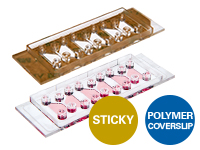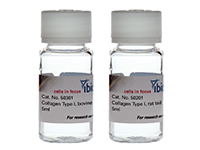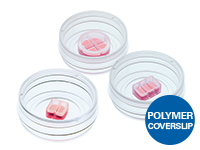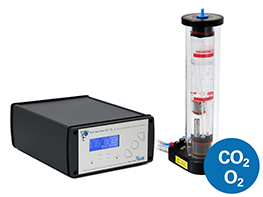Immune Cell Migration and Chemotaxis
Immune cell migration is a critical process in the immune response to infection. In order to mount an effective response against pathogens, immune cells must first migrate from the blood to the site of infection. This process is facilitated by a combination of chemical signals, including cytokines and chemokines, which are released by infected or damaged tissues.
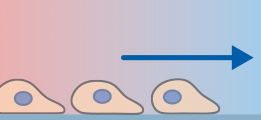
Immune cells, such as neutrophils and monocytes, detect these signals and migrate toward the site of infection. There they can destroy invading pathogens by phagocytose and recruit additional immune cells to the area. Immune cell migration is tightly regulated and can be influenced by a variety of factors, including inflammation, tissue damage, and the presence of pathogens. Understanding the mechanisms of immune cell migration is critical to the development of new treatments for infectious and inflammatory diseases.
A chemotaxis assay is conducted to analyze whether or not a cell type directly orients and migrates toward a defined chemoattractant. Chemotaxis is a particularly important process during the immune response, making chemotaxis assays a powerful tool in immunology research. Cell migration assays, such as the classical scratch assay or wound healing assay, give information about the speed and characteristics of cell migration (e.g., after a gene knock-down or a drug treatment).
Murphy K, Weaver C, Mowat A, Berg L, Chaplin D, Janeway CA. Janeway's Immunobiology. Garland Science; 2017.
Find Out MoreFind further detailed information about the planning, conduction, and data analysis of chemotaxis assays and wound healing and migration assays in our Application Chapters. |
|
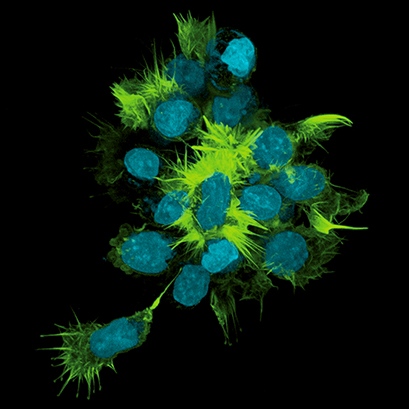
3D reconstruction of serial confocal sections of a leukemic B cell cluster (JVM3 cell line) exposed to a CCL19 gradient (from 0 (up) to 500 ng/ml (down)) in a μ-Slide Chemotaxis. The cluster was fixed and stained with Phalloidin (green) and DAPI (blue). Javier Rey-Barroso; Physiopathology Center of Toulouse-Purpan, Toulouse, France.
ibidi Solutions for Migration and Chemotaxis Assays
The µ-Slide Chemotaxis and the sticky-Slide Chemotaxis are ideal for analyzing single cell migration in 2D and 3D. |
|
Chemotactic gradients can be easily established in water-based 3D gels, such as Collagen I gels because the gel structure does not hinder the formation of a soluble gradient by diffusion. |
|
The ibidi Culture-Inserts with 2 Wells, 3 Wells, or 4 Wells are silicone inserts with a defined cell-free gap for wound healing, migration, 2D invasion assays, and co-cultivation of cells. They are available as individual inserts in a µ-Dish or as 25 pieces for self-insertion. For high-throughput experiments, we provide the Culture-Insert 2 Well 24. |
|
The ibidi Stage Top Incubators provide physiological conditions for live cell imaging during cell migration and chemotaxis assays on every standard inverted microscope. They include CO2 and O2 control as well as actively controlled humidity. They can be used with slides, dishes, or multiwell plates. |
|
Selected References
Migration of neutrophils under shear stress in the µ-Slide I 0.8 Luer and migration of T cells using the Culture-Insert 2 Well
Lim K, Hyun YM, Lambert-Emo K, et al. Neutrophil trails guide influenza-specific CD8+ T cells in the airways. Science. 2015;349(6252):aaa4352. doi:10.1126/science.aaa4352.
Read article
Tracking chemotactic migration of neutrophils in a live cell imaging setup using the µ-Slide Chemotaxis and the ibidi Stage Top Incubator
Hundhammer T, Gruber M, Wittmann S. Paralytic Impact of Centrifugation on Human Neutrophils. Biomedicines. 2022;10(11):2896. doi:10.3390/biomedicines10112896.
Read article
Neutrophil and macrophage chemotaxis assays using the µ-Slide Chemotaxis
Morad HOJ, Luqman S, Pinto LG, et al. Artemisinin inhibits neutrophil and macrophage chemotaxis, cytokine production and NET release. Sci Rep. 2022;12(1):11078. Published 2022 Jun 30. doi:10.1038/s41598-022-15214-6.
Read article
Macrophage chemotaxis in 3D Matrigel using the µ-Slide Chemotaxis
Paterson N, Lämmermann T. Macrophage network dynamics depend on haptokinesis for optimal local surveillance. Elife. 2022;11:e75354. Published 2022 Mar 28. doi:10.7554/eLife.75354.
Read article
Read on and learn more about methods for Immune Cell Analysis, Tumor Microenvironment and Immunooncology, or Immune Cell Cultivation Under Shear Stress.






